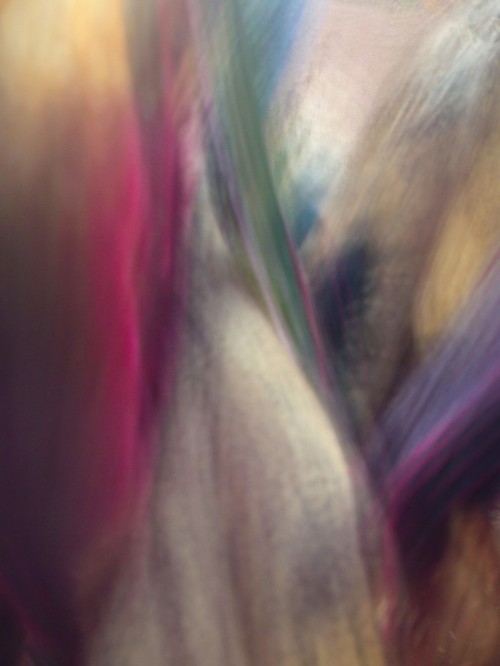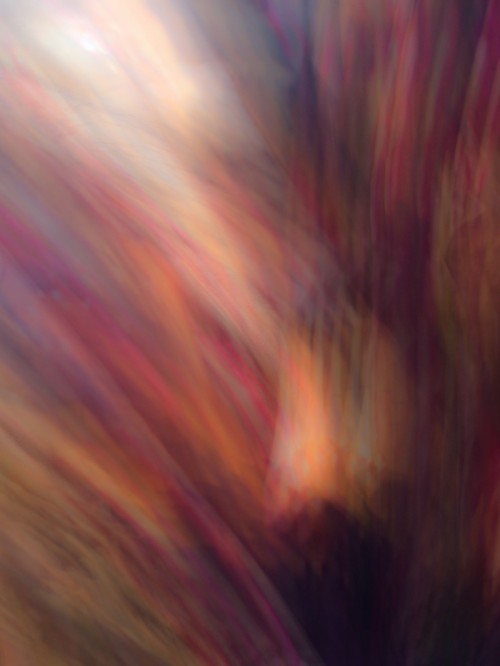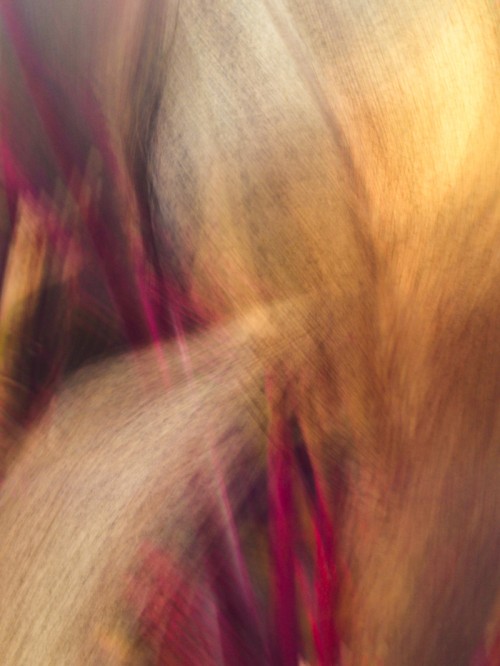
Next week we’re releasing my next eBook – The Visual Imagination, a book about creative techniques and ideas that focuses mostly on impressionism and abstraction. Yesterday I was doing a pre-release podcast interviews, talking to Ibarionex Perello, the amazing voice and mind of The Candid Frame, and he asked me the one question I’m so fond of asking others. Why?
Not everyone does photographic work that willingly abandons the literal, so why play with ideas of abstraction and impressionism at all?
1. Focus on Experience
This new book, The Visual Imagination came out of an experience I’ll tell you about on Monday. The short version: I had an experience with a painting – to say I merely looked at it wouldn’t do the moment justice – that made me wonder whether my own work created a similar experience in others, and if not – which is what I suspected – why not, and was there a way I could do that? Whether we create literal photographs or something more abstract, I think many of us are more hung up on creating something that can be understood. Understanding is good, but it’s not everything. There is a lot of music and visual art that moves me, creates in me an experience that’s more than just rational – and sometimes not rational at all – that I don’t understand. There’s poetry I don’t understand but it speaks to me. I want my photographs to do that. Learning to photograph in a way that’s not what I normally do has taught me to focus more on the experience, on things like mood and colour, than I once did.
2. Learning to See
When we zoom in so close on a flower that we reduce it to form and colour and nothing recognizable, we learn to see that scene for the form and colour, not the flower. The more we experiment with alternate ways of seeing, the more able we become to see the building blocks of great photographs – line, shape, balance, tension, colour, visual mass. The job of the photographer is not merely to use the camera in her hands but to perceive, to truly see what’s there.
3. Play is not practice
Remember how we used to spend hours as kids playing in the back fields and back alleys? That play taught us better and deeper than most classroom lessons. Practice is good, but it often focuses on the right way to do things, and avoiding the wrong way, and too much focus on avoiding the wrong way to do something stifles creativity in a field where there really is no absolute wrong. There are principles in photography but no rules and the more we engage in play, the more creativity we’ll discover and – this is for those of us who lean towards the geeky stuff – the better we become with our technical tools. You may never put a photograph with intentional motion blur into your portfolio, but playing with the techniques will make you more creative and technically proficient.
I can’t wait to introduce this book to you, but with or without it, I encourage you to jump the creative ruts, find something that gives you that sense of play back, and helps you focus on creating unforgettable visual experiences for you and the ones who view your work.


The Visual Imagination has now been released and is available on Craft & Vision as a downloadable PDF for only $10

Comments
Bought it, read it, and went out to play this afternoon. I haven’t had this much fun in ages! I have a difficult time being on my feet for long, but the inspiration from your book plus the excitement of discovery gave me wings for awhile. Thank you!
Makes me happy to hear this, Celeste! 🙂
Can’t wait to read and be inspired by this book David – abstract photography is one of my photographic passions and even though it can be frustrating as well as awe-inspiring I really love the beauty it expresses.
Thanks for this, David. I’ve just recently made a strong move in a similar direction.
Lovely David,
The top and the bottom images are especially evocative.
This is a great post. Thanks for sharing. I have been thinking about spending more time with abstract photography, and this is right on point.
Rod
As always an inspiration. This e-book couldn’t have been put before at a better time. Looking for my photographic visual voice. Unique, creative, artistic, painterly. This book will be my guide.
Thanks again David
Pingback: David duChemin:The Visual Imagination | The Photo Impressionism Project
I’m looking forward to this one, David! Since I was trained as a painter, I find the idea of bringing a painterly vision to photography intriguing.
Very excited for this book!!! Exactly what I’ve been loving experimenting with after reading some of your book, The Visual Toolbox. And, I can’t wait to learn more from you about this topic. Since shooting this way for just a month or so, I’ve been finding ways to incorporate it into my shooting, and it definitely connects the heart, the feel to what I’m shooting. 🙂
I enjoy do abstracts every so often and find it a fun and creative experimentation. That is one reason I like shooting with two cameras so I can play with one.
Looking forward to listening to the interview with Ibarionex, The Candid Frame is one of my favorite podcasts!
This may be off topic, but it feels like one of the recurring ideas on your posts recently is intention. It really resonates with what my kungfu sifu has been telling me since I started following him last year; which is know your intent in everything you do. Doing something mindlessly or blindly will only lead you to nowhere. Be it practicing by yourself or with others, if you do not do it with intention, it’d be time wasted/ empty effort. You must constantly think about: What is it that I am doing? Why am I doing this? Being cognizant of your intent can help you visualize. Yes, there will never be a blueprint for life and fate tends to throw a lot of curve balls. Though there are things beyond our control, if we can visualize, we’d cope better with the unexpected. My sifu tells us all the time, make all the mistakes in practices, but strive to do everything perfectly because we’d be lucky if we can pull off 70% of what we learned or practiced in real life situations. The idea of making mistake and scoring 100% may sound conflicting, but it really isn’t as making mistake is part of the process of finding out what works and doesn’t work for you; it is part of a never-ending process of perfecting yourself. I am by no means an avid photographer, I only practice photography occasionally, but I do enjoy reading your books, blogs and I like your works and philosophies. David, I look forward to you new ebook for more inspirations to my kungfu journey!
I’m becoming more intrigued by the idea of the “thing” than the “thing” itself and have been experimenting with shooting bits, pieces, out-of-focus, blurs, etc that hint at the “thing”. I’m eagerly looking forward to more of your images.
Where do I order it?
We’ll release it on Monday, Koonyik – come back to the blog and there will be links as well as a discount code.
Moves me out of the head and into the heart. Just what I’ve needed. Thanks! I can’t wait to get the book!
There are so many reasons for moving in this direction. I think that abstraction and blur and impressionism is actually more expressive of what is truly real, than what we tend to call reality. It taps into the unconscious and the deeper levels of who we are. To limit reality to the categories of space and time is invariably to distort reality. You mention play. It is much easier to engage in play when doing this kind of photography. Moving sliders all the way to the left and all the way to the right; exploring all of the blend modes; trying out varying opacities; messing with textures,, etc., etc. is just wonderful. The more time that I spend with my 4 yr. old granddaughter, the better artist I become.
I consider myself an amateur photographer. Traditional standard, zoom and macro can produce some amazing photos, but somehow I felt that if you’ve seen one, you’ve seen them all. When I accidentally produced an abstract photo, I was at awe!! I kept finding myself looking and feeling something different with every glance…I will definitely be ordering this book! Great post and thanks for sharing!
David,
you certainly know the work of Ernst Haas, the color ones. I have just stated to think of his fine way of using intentional camera movement with kodachrome film.
I really want to see your too.
Thanks for sharing,
Stefano
Heya David,
can’t wait to get your new book on my iPad to be read 🙂
I especially look forward to this one, since its interesting for me to see what/how my photos trigger emotions and memories inside me, and if/how I can trigger similar experiences in other people.
the examples you give in this blogpost is also quite intriguing!
br
Michael Seirer
Great post! I think it’s very important (at least to me, right now) to forget the “rules” and just play with a camera. In fact, my favorite shots recently have been my abstract ones, the ones that depend solely on my process, my movement, my playfulness, my instinct, and not the ones where I’m trying to get this or that in focus or in the right spot in the frame or correctly exposed. It’s so freeing. And it’s funny, because it’s mirroring a time in my life where I’m letting go of other “rules” that I clung to because I thought my life had to look a certain way. And I’m getting more interested in actually painting, and abstract painting at that. I just love the idea of seeing brush strokes, aka seeing camera movement, because it tells the story of the artist’s movement, what they were doing in that exact moment that led to the final product. And what is art, if not an expression of the artist?
If anyone’s interested, here’s a link to my nature macro shots: http://liatnoten.viewbook.com/album/nature-macro-photography?p=1#2
And this is what happens when you dance around in place and zoom in and out however you feel like it while photographing a ferris wheel: https://www.flickr.com/photos/gizzmo2z/11509386075/
Looking forward to that e-book!
Liat
Liat, The flower set was delightful, and I found the ferris wheel intriguing. Thanks for sharing…!
Thanks Jerry, glad you enjoyed them.